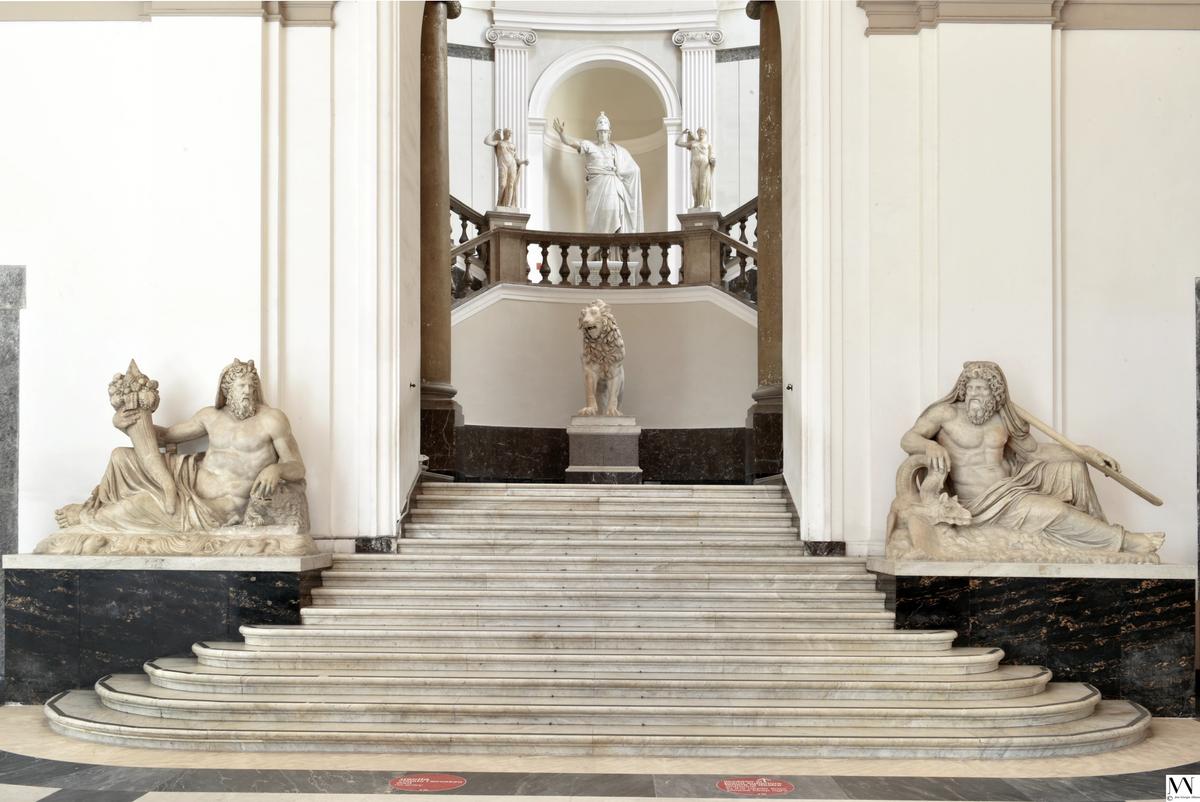The Museo Archeologico Nazionale di Napoli (MANN), one of the foremost archaeology museums in the world, is to build a new branch in the Real Albergo dei Poveri, an uncompleted 18th-century complex in central Naples that has the longest façade of any building in Europe.
Gennaro Sangiuliano, Italy’s Minister of Culture, has earmarked €148m for the creation of MANN 2, as the new branch is being called. The museum, which is 1.8km from MANN's existing site, will provide 10,000 sq. m of exhibition space.
MANN, first established in 1777, is home to the largest collection of classical archaeology in the world. But a range of issues—including funding and governance problems, and a shortage of exhibition space—has meant the museum has struggled to publicly display the breadth of its collection.
In an interview with The Art Newspaper, Paolo Giulierini, the museum's director, said MANN 2 is “an epochal urban regeneration project that will leave its mark on Naples”. He adds, “The Archaeological Museum of Naples is at the centre of Sangiuliano's vision.”
A fundraising drive to construct the new museum is ongoing. “We need to proceed quickly with tenders and find additional resources to return this space that the city has been waiting for decades” to its former state, Sangiuliano said in a statement shared with The Art Newspaper. Renovation works are scheduled to begin later this year.
The Real Albergo dei Poveri was commissioned by Charles III of Bourbon (1716-1788)—considered the first king of Naples—and built by the architect Ferdinando Fuga in 1751. The building, which has a façade stretching more than 400m long and is considered one of the most famous structures in Naples, was conceived as something akin to a social housing project, but was never completed. It was, for a period, used as a prison. Today, it is owned by the Municipality of Naples, but has remained vacant for years while falling into an increasingly derelict state.
News of the expansion plan comes as MANN opens the exhibition Alexander the Great and the East (29 May-28 August). In March, the museum reopened its western wing after a 50-year closure dogged by generations of funding problems. The once-abandoned western wing has added 2,000 sq. m of exhibition space, within which the museum is displaying artefacts never seen before by the Italian public.
As well holding some of the most important antiquities from the height of the Roman Empire, MANN is the custodian of the world’s largest collection of deposits from nearby Pompeii, the ancient and prosperous city in the Bay of Naples. At midday on 24 August 79CE, the nearby volcano Mount Vesuvius suddenly erupted, spewing ash and toxic gas 20 miles into the air. Overnight, Pompeii—home to more than 10,000 people—vanished under a blanket of burning soot. By morning, the city was buried under six meters of ash and molten pumice.
The city’s sudden burial also helped preserved it. When archeologists began to excavate the lost world of Pompeii more than 200 years ago, they discovered sculptures, mosaics and ceramics that had remained in almost pristine condition for more than a millennium.
Today, the site of Pompeii is one of Italy’s top tourist destinations, with more than three million visitors each year. But many of the artefacts excavated from it remain in storage or in private collections. Of around 400,000 artefacts excavated from the ancient city, around one tenth—approximately 40,000 objects in all—are currently held by MANN. Some of the best known relics of Pompeii are on display in the museum—visitors can see the intricate golden jewellery the city's wealthy elite wore, the depictions of Cupid and Daphne that adorned their homes, the famous statue of the god Pan having sex with a goat.
But many of the holdings remain unseen by the public, held in the attic and basement of the museum in cell-like rooms secured by iron bars to deter thieves. While the holdings held in these storage cells are often loaned to other institutions—the British Museum borrowed many for the exhibition Life and Death in Pompeii and Herculaneum in 2013—there has never been the space to show many of them in Naples.
MANN2 will primarily show works from what is known as the Santangelo Collection, Giulierini confirmed to The Art Newspaper. The collection was acquired by Francesco Santangelo, an 18th-century Neapolitan politician and aristocrat who amassed Italy's largest collection of artefacts from Pompeii and the surrounding region, known by the Romans as the Magna Graecia. The museum acquired the collection in 1865, after Santangelo’s death. It has, however, largely remained unseen since.
Since taking the helm at the museum in 2015, Giulierini has raised over €50m from the Italian government, philanthropic donations and European Union initiatives including the European Structural and Investment Fund. With the funds raised, Giulierini oversaw, in 2016, the reopening of the museum’s Egyptian wing after six years of closure and, in 2017, the reopening of its Epigraphic wing, also closed for six years prior. In 2019, Giulierini reopened the Magna Grecia section of the museum, a display of mosaic floors from ancient Roman villas which had not been seen by the public since 1996.
As well as MANN2, the refurbished Real Albergo dei Poveri is also expected to house a branch of the national Italian library and new facilities for the University of Naples Federico II, the city’s main university.


